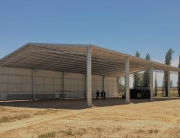Image: Kindel Media / Pexels
In today’s world, environmental sustainability is more important than ever before. As individuals, we can make a significant impact by taking small steps to reduce our carbon footprint. One way to do this is by making upgrades to our homes that promote sustainability and reduce waste. In this article, we will explore several upgrades you can make to create a more environmentally friendly home.
1. Rainwater Tanks
The first item on our list, rainwater tanks, are designed to collect and store rainwater that falls on your property. This water can then be used for a variety of purposes, such as watering your garden, flushing toilets, or washing clothes. By using rainwater, you reduce your reliance on city water, which can be expensive and contribute to water scarcity in dry areas. Additionally, rainwater is free of chemicals, making it a healthier choice for your household needs.
2. Energy-Efficient Lighting
Switching to energy-efficient lighting is an excellent way to reduce your energy consumption and save money on your electricity bills. LED bulbs use significantly less energy than traditional incandescent bulbs and have a much longer lifespan. They often look better in your house, too. They also produce less heat, which can help to reduce your cooling costs during the summer months.
3. Solar Panels
Installing solar panels on your roof is another excellent way to reduce your carbon footprint and save money on your electricity bills. Solar panels generate electricity by harnessing the power of the sun, which is a clean and renewable energy source. They require minimal maintenance and can last for up to 25 years or more.
4. A Smart Thermostat
A smart thermostat is an innovative device that can help you to reduce your energy consumption by optimizing your home’s heating and cooling system. It learns your schedule and preferences and automatically adjusts the temperature to maximize comfort and energy efficiency. This can result in significant savings on your energy bills and a reduction in your carbon footprint.
5. Insulation
Proper insulation is crucial for maintaining a comfortable indoor temperature and reducing your energy consumption. Good insulation helps to keep your home warm during the winter and cool during the summer, reducing your reliance on heating and cooling systems. This, in turn, reduces your energy bills and carbon emissions. A comfortable home and saving money is a win-win for everyone, and you are helping the environment, too!

6. Low-Flow Fixtures
Installing low-flow fixtures in your bathroom and kitchen is an excellent way to reduce your water consumption and save money on your water bills. Low-flow showerheads and faucets use significantly less water than traditional fixtures, without compromising on performance. If you often forget to turn your fixtures off, low-flow fixtures can help you save money and reduce the amount of water you are using drastically.
Conclusion
There are numerous upgrades you can make to create a more environmentally friendly home. From rainwater tanks to smart thermostats, each of these upgrades can have a significant impact on your carbon footprint and help to reduce waste.
By making these changes, we can work together to create a more sustainable future for ourselves and future generations!





































